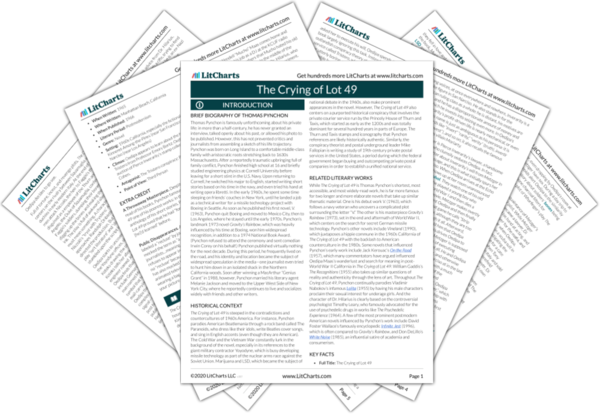The Tristero Muted Horn Symbol
Beyond literally representing the shadowy Tristero organization, the muted post horn symbol also represents the impossibility of objective interpretation—an idea that’s embodied by Oedipa Maas’s uncertain, confusing investigation into Tristero. Just like the reader…
read analysis of The Tristero Muted Horn SymbolBones
Since bones are often regarded as the sacred remains left behind by past generations, their conversion into consumer goods in The Crying of Lot 49 represents how capitalism cheapens and defaces the human experience. Oedipa…
read analysis of BonesCars, Smog, and Freeways
In The Crying of Lot 49, the most significant symbols of how modern consumerism hurts humanity are cars, the freeways laid down for them, and the smog they leave behind. In the novel, Oedipa…
read analysis of Cars, Smog, and FreewaysThe Nefastis Machine
John Nefastis’s mysterious, useless, hermetically sealed communication box is a metaphor for the feelings of alienation and entrapment that Pynchon believes are inherent to modern American society. In particular, Oedipa’s failure to communicate…
read analysis of The Nefastis Machine
Although mail might seem like an unremarkable feature of modern life, it represents the social interconnectedness that Oedipa is searching for, and it stands in contrast to the electronic, immaterial media technologies that were increasingly…
read analysis of Mail
Drugs and Alcohol
A constant presence throughout The Crying of Lot 49, drugs and alcohol represent Pynchon’s characters’ futile attempts to escape their stagnant, unsatisfactory lives. Characters drink and use drugs in response to a reality so…
read analysis of Drugs and Alcohol






